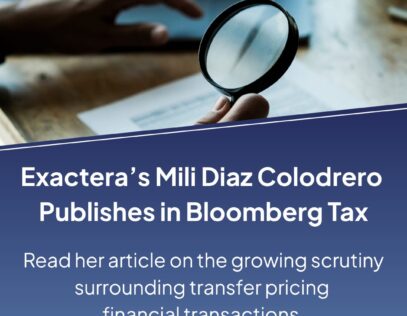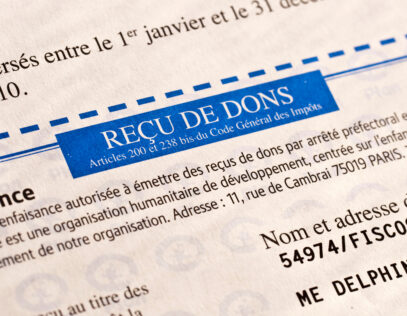Intragroup services are common transactions for multinational groups. An intragroup service is when one entity in a multinational group, often the parent company, offers support to another entity.
That support could be in the form of human resources, finance, legal, marketing, or any other needed service that is not a central part of the business. Intragroup services can create cost savings for the overall group and serve legitimate business purposes. Generally, they involve services that an entity would have to pay an outside provider for or hire employees to perform.
Most countries require taxpayers to demonstrate that their intercompany transactions, including their intra–group services transactions, are at arm’s length. The pricing of intragroup services in cross-border, related-party transactions is often the subject of tax authority scrutiny.
Tax authorities focus on these transactions because they’re aware that if a group member pays a little more or a little less for the service, the multinational group could manipulate where its profits are reported and thus where its taxes are paid.
This is because a shift in the price for intragroup services could increase or decrease the tax deductions of the entity making the payment and correspondingly increase or decrease the amount of income recognized in the country where the service provider is located.
Tax authorities will therefore carefully review intragroup transactions to ensure that they have been priced to reflect fair market value for the services provided and not priced in such a way to shift profits out of the local country’s tax reach.
The Benefits Test
Because intra–group services aren’t necessary parts of the business, multinational companies have to prove that the services are, in fact, needed. This means a service must pass the Benefits Test.
According to the Benefits Test, the service must provide the related company with economic or commercial value to enhance or maintain its business position.
Also, to pass the test, a company must show that an independent enterprise would be willing to pay for the service from an unrelated party or perform it in-house under comparable circumstances.
Intragroup Services: The Exceptions
Shareholder / Stewardship Activities: Activities classified as shareholder activities aren’t considered intragroup services. Shareholder activities are activities carried out even though multinational group members don’t need the activity. The activity is performed solely because of the shareholder’s ownership interest, in its capacity as a shareholder. As an independent entity wouldn’t be willing to pay for the service, a charge to the recipient is not justified.
These activities might include the appointment and remuneration of directors or the preparation and filing of consolidated financial reports. Acquiring share capital in subsidiary companies and the protection of capital investment in subsidiary companies are also considered shareholder activities.
Duplication/Incidental Benefits/Passive Association: Duplicated services aren’t considered intra-group services either. For example, if a parent company performs the human resource function for a few subsidiaries, but one of those subsidiaries performs its own human resource function, then that company doesn’t need the parent company’s service.
Incidental Benefits: Services that a group member performs for certain group members that incidentally provide benefits to other group members also aren’t considered intra–group services. For example, if a parent company launches a marketing campaign that ends up benefitting a related-party manufacturer, but is not intended for the manufacturer, then it’s not considered an intra-group service.
Intragroup Services
On-call Services: A parent company or a group service center that is on call to provide services at any time, and that charges a standby fee, may be providing an intra–group service. Such services might be managerial, technical, or accounting services.
An intragroup service would exist to the extent that it would be reasonable to expect an independent enterprise in comparable circumstances to incur “standby” charges to ensure the availability of the services when the need for them arises.
Method of Charging Intragroup Services
There are two methods for charging intragroup services: the direct charge method and the indirect charge method. The direct charge method is used when services can be identified as directly benefiting a particular company in the group, thus allowing the costs to be directly assigned.
The indirect charge method is used when the proportion of the value of the services rendered to each entity cannot be quantified exactly, and an estimate is needed. The indirect charge method requires identifying all relevant costs and allocating them among all recipients using allocation keys.
Allocation of costs must be commensurate with the benefit the recipient derives. Whichever allocation method is chosen, it must lead to a result that an independent enterprise would have been prepared to accept.
Best Method Rule / Most Appropriate Method
Transfer pricing methods are used to determine the arm’s length transfer price for intra-group services. As with other types of transactions, the OECD’s most appropriate method rule and the U.S.’s best method rule still apply. Both rules encourage selecting the method that is most organic to the transaction.
The U.S.’s Best Method Considerations
- The degree of comparability between the controlled transactions and uncontrolled transactions
- The availability of reliable and quality data
- Assumptions used in the analysis
- The sensitivity of results to data deficiencies
The OECD’s Most Appropriate Method Considerations
- The strengths and weaknesses of each method
- The nature of the controlled transaction (determined by performing a functional analysis)
- The availability and reliability of the information (particularly for uncontrolled comparables)
The Services Cost Method
The IRS introduced the services cost method in 2007 (Rev. Proc. 2007-13) to minimize the compliance burden of common intercompany services that warrant low markups. This unique method allocates costs without a markup. Using the services cost method is the taxpayer’s choice. The IRS won’t impose the method if the taxpayer prefers to employ a markup or other arm’s length approach.
To use the services cost method, services must qualify as “covered services,” according to the IRS. The IRS has a blacklist, a list of services that don’t qualify, and a whitelist, a list of services that do.
There are more than 100 specified covered services on the whitelist, provided by the IRS in Rev. Proc. 2007-13. Whitelist services cover a range of service activities relating to payroll, accounting, recruiting, training, information technology, and more.
Blacklist services, set forth in Treas. Reg. Section 1.482-9, include activities like manufacturing, construction, research, engineering, and financial transactions.
To qualify, the median markup resulting from a comparable search must be less than or equal to seven percent. And there can’t be an excluded category of high-value services. In addition, the “business judgment rule” must be met. This means that the taxpayer must determine that the service provided in the intra–group transaction doesn’t contribute to an integral part of the business or give the business a competitive advantage.
The taxpayer must also maintain documentation, including a statement showing the taxpayer’s intention to apply the services cost method.
The Blacklist
- Manufacturing
- Production
- Extraction, exploration, or processing of natural resources
- Construction
- Reselling, distribution, acting as a sales or purchasing agent, acting under a commission or other similar arrangement
- Research, development, or experimentation
- Engineering or scientific
- Financial transactions, including guarantees
- Insurance or reinsurance
The Whitelist
- Payroll
- Premiums for Unemployment
- Accounts Receivable
- Accounts Payable
- General Administrative
- Public Relations
- Accounting and Auditing
- Tax
- Compliance
- Budgeting
- Treasury Activities
- Statistics
- Human Resource Services
- Computer Support
- Database Maintenance
- Legal Services
- Insurance Claims Management
- Network Administration
Low Value-Adding Intra-group Services
The OECD provides an elective, simplified transfer pricing approach for low-value-adding services, which is similar to the U.S.’s services cost method.
For these intra-group services, a standard profit markup of five percent can be applied. Low value-adding intra-group services are services that are supportive in nature and are not part of the multinational group’s core business. The services must not require the use of unique and valuable intangibles, not involve the assumption or control of substantial or significant risk by the service provider, and not give rise to the creation of significant risk for the service provider.
Transfer Pricing Methods
Comparable Uncontrolled Price Method (CUP)/ Comparable Uncontrolled Services Price Method (CUSP): The comparable uncontrolled price method from the OECD Guidelines is like the comparable uncontrolled services method used for intra-group services in the U.S. The CUP/CUSP method compares the price for services provided in a transaction between related companies to the price of those transferred in a comparable uncontrolled transaction. It’s the most direct method and the method most tax authorities prefer around the globe.
The CUP method is commonly used for intercompany transactions involving tangible goods, intangible goods, intragroup services, and financial services when comparability data is available.
This method is widely considered to be the most reliable method when you have access to high-quality, comparable uncontrolled transaction data. A transaction is comparable if differences between the tested party and third-party transactions don’t have a material effect on the price or if adjustments can be made to eliminate the material effect of any differences.Transactions must be extremely similar to be considered comparable under this method.
Resale Price Method (RPM) / Gross Services Margin Method (GSMM): The resale price method from OECD Guidelines is like the gross services margin method used for services in the U.S. This method compares the resale gross margin a related party earns with the resale gross margin that comparable uncontrolled parties earn. Under the resale price method, comparability is less dependent on strict product comparability. Emphasis is placed on the similarity of functions performed and risks assumed. The uniqueness of each transaction makes it very difficult to meet this method’s requirements. This method is most commonly used for sales and distribution transactions between related entities.
Cost Plus Method (CPM)/Cost of Services Plus Method (CSPM): The OECD’s cost plus method is similar to the cost of services plus method in the U.S. for intra-group services. This method compares and identifies the markup earned on direct and indirect costs incurred with that of comparable independent companies. This is a preferred method in cases where semi-finished goods are sold between related parties and in contract/toll manufacturing arrangements. This method is most commonly used for manufacturing transactions. Functional comparability is the most important factor to consider when assessing this method.
Profit-split Method (PSM): This method is used in cases involving the transfer of intangibles or when multiple international transactions cannot be evaluated separately. The profit split method allocates the combined operating profit resulting from an intercompany transaction among companies based on the relative value of each related party’s contribution to the operating profit. It can also be used to allocate losses.
There are two types of profit split methods – the comparable profit split method and the residual profit split method. This method is the most commonly used one for transactions involving intangible goods and services. The contribution is determined by functions performed, risk assumed, and resources employed.
Comparable Profits Method (CPM) / Transactional Net Margin Method (TNMM): This method compares the net profit margin from comparable uncontrolled transactions or companies with the net profit margin of controlled transactions. The net profit margin could be computed with reference to cost, sales, or any other relevant profit level indicator, such as operating assets.
This is the most commonly used method because of the lack of availability of comparable uncontrolled prices and gross margin data required for applying other methods such as the resale price method or the cost-plus method.
This method’s focus is on a broad level of product comparability and a high level of functional comparability. It usually can be applied to any type of transaction and is often used to supplement analysis under other methods. This method is most commonly used for intra–group services.







